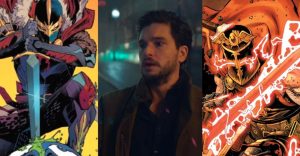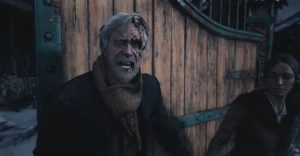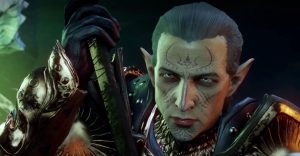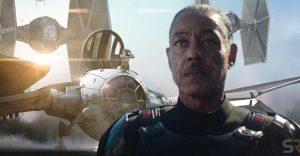10 Best Episodes Of The Mandalorian (So Far), Ranked
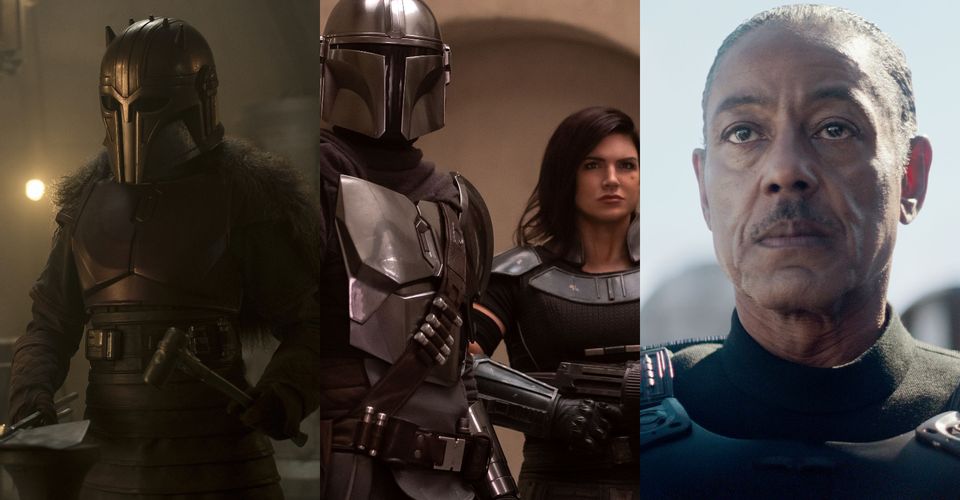
It’s time to take a look back at the first two seasons of The Mandalorian. Not every episode works, but there’s certainly a lot of great stuff to unpack in the series’ best episodes thus far.
The show works best when it’s not afraid to be weird, emotional, and let its original characters develop and shine. The best thing about The Mandalorian isn’t the chance to see a cameo—some of which the show makes better use of than others—but the story of a lonely man and child finding family in each other.
10 Chapter 10: The Passenger

This episode is full of entertaining father-son moments between Mando and the child, as they’re stranded in a new location full of spider-like creatures. The fun begins with the opening sequence, during which Din goes full protective-dad-mode when a group of bandits threatens the safety of Baby Yoda.
Next up is the introduction of Frog Lady, a passenger Mando must ferry in order to get the information he needs on the location of other Mandalorians. Frog Lady is undoubtedly the most adorable character to be introduced since the child, striking that perfect balance of cute and odd-looking. Some of the best Star Wars content comes from the storytellers being unafraid to go to bizarre places, exploring creatures and/or mythology unlike what audiences may have come to expect.
9 Chapter 4: Sanctuary

Mando tries to find a place to lay low after stealing Baby Yoda back from the Empire, but instead stumbles upon a village full of vulnerable people who need his help. Din agrees to this, as it offers him and the kid a place to hopefully remain concealed. Mando and Cara Dune, whom he recruits for help after a bar brawl, lead the villagers through training, knowing that the two of them won’t be enough to defend the village on their own.
Through conversations with beautiful widow Omera, Din reveals why he doesn’t take his helmet off in front of people, as well as why it might be tempting for him to hang up his helmet once and for all. But, Mando isn’t ready to give up “The Way,” and an attempted assassination by another bounty hunter who managed to track him and the kid confirms his choice.
8 Chapter 1: The Mandalorian

With a property that has so much expanded universe plot and characters through various movies and shows, the pilot of The Mandalorian is refreshingly contained and straightforward, with just enough intrigue for the future.
The tone of the show is that of a lighthearted Western, with an ending that promises an emotional core that centers on family, something Star Wars is supposed to be concerned with. The titular character’s characterization is just enough to give fans a peek at what they might be in for while leaving plenty of room for them to learn more.
7 Chapter 14: The Tragedy

Chapter 14 sets of the conflict that will define the finale of season two, with father and son being separated after interference from the Empire. After Ahsoka Tano recommends that Din take Grogu to the Seeing Stone so that the child may choose his own fate, things quickly go south. Boba Fett arrives, accompanied by Fennec Shand, searching for his armor, which Din is in possession of. When the Empire arrives not long after, attempting to steal Grogu, Din quickly strikes up a deal with the bounty hunters in an effort to secure his child’s safety.
The episode is mostly comprised of one long, well-directed action sequence, helmed by Robert Rodriguez, who brings his unique visual style to the overly fan-servicey return of Boba Fett. No matter how impressive this sequence is, it can’t top the real highlights of the episode, moments that challenge Din and his beliefs. He’s been tasked with delivering the child to a Jedi, but it’s clear how much the separation will hurt them both. He’s also reluctant to hand over Beskar to Fett, but he changes his mind after another revelation that Mandalorians come from all kinds of backgrounds.
6 Chapter 13: The Jedi

Chapter 13 has a lot to offer in terms of visuals. The episode plays a lot with Samurai influences, as well as an emphasis on a dark color pallet that emphasizes the bright white blades of Ahsoka Tano. Since the finale of season one had Din setting out to seek help from a Jedi, the longtime enemy of the Mandalorians, audiences have waited to see what an interaction between the central father/son duo and a Jedi would look like.
Ahsoka’s inclusion could have felt too much like fan service, like the name drop at the end of her otherwise-great duel with the Magistrate, but her history with Bo-Katan, as well as her own complicated past with the Jedi, make her a suitable choice for this interaction.
5 Chapter 11: The Heiress

The most important thing about this episode is the reunion between Frog Lady and her husband. Now that that’s out of the way, it’s also pretty great to see Mando meet the heir to the throne of Mandalore, who isn’t someone he considers to be truly Mandalorian at all. This is because Bo-Katan and her allies remove their helmets at will, something previous episodes have established Din feels very strongly about.
What’s even more interesting is the revelation that Din’s beliefs stem from his unwitting involvement in a religious cult, something that should have heavy implications for his character and his beliefs. All of this works even if you haven’t watched The Clone Wars series, where Bo-Katan was initially featured.
4 Chapter 3: The Sin

Predictability in a story isn’t necessarily a bad thing but shock for shock’s sake is always a bad thing. The choice to have Mando go back for the kid isn’t surprising, but it’s great. The relationship between the two has already developed at this part, enough so that it’s genuinely heartbreaking to witness their brief separation in the middle of the episode.
The child’s cries as he’s taken away clearly strikes a chord in Din as much as it does the audience. He gets a cool new suit of armor made out of the reward for bringing in the kid, and then immediately goes back and utilizes said armor to steal him again. The other Mandalorians have his back when it looks like he and the child might be captured by various members of the Guild, and the duo manage to pull off an escape—while Baby Yoda finally gets that ball.
3 Chapter 7: The Reckoning

With the finale approaching, it’s time for Mando to put together a team. Greef contacts Din, proposing that the two team up in order to get rid of the Imperial occupation on his planet. He recruits Cara Dune and Kuill to help him in his quest, both of whom he shared a good rapport in past episodes.
There’s also a funny and touching montage of events showing how Kuill reprogrammed IG-11 to be a nurse droid, whose sole function is now the care and safety of the child. Really, the only negative in this episode is the death of Werner Herzog’s client, as he gave a performance perfectly suited to the exciting oddity that defines much of Star Wars.
2 Chapter 15: The Believer

Chapter 15 is unique in that it asks a question and spends much of its runtime exploring the implications of various answers to that question. A season with challenges to Din’s beliefs culminates in the themes this chapter explores, most of which revolve around belief, as the title would suggest.
The episode toys with ideas of moral relativity, with an ending that has Mayfeld, who’s played a bit of devil’s advocate this episode, taking a stand so that he can “sleep at night.” While his action is spurred by a cruel speech from an evil Imperial officer, earlier on in the episode, he and Din are relieved to see stormtroopers, as in this instance it results in their rescue. Din does a lot of compromising, too, sort of breaking the creed before completely breaking it, all in order to show how far he’ll go to save his son. The themes this episode explored: redemption, belief, morality, and how far we’ll go for the people we love are present in Star Wars when it’s at it’s best.
1 Chapter 8: Redemption

The season one finale is still the best episode to date. Directed by Taika Waititi, it’s as funny as you’d expect, but it’s also heartfelt and exciting. What’s surprising is how much IG-11 steals the show. We know by the time this episode comes out just how strongly Mando feels about droids, and he makes his distrust of IG-11 clear from the start.
However, this reprogrammed droid is an allegory for how people really can change, and he ends up saving the day in more ways than one. The climax is exciting, nerve-wracking, and emotional, ending with the reunion of father and son that gives fans a happy ending, all without jamming in callbacks that don’t fit the story. This episode believes in the power of the show’s original characters, with great results.
About The Author










